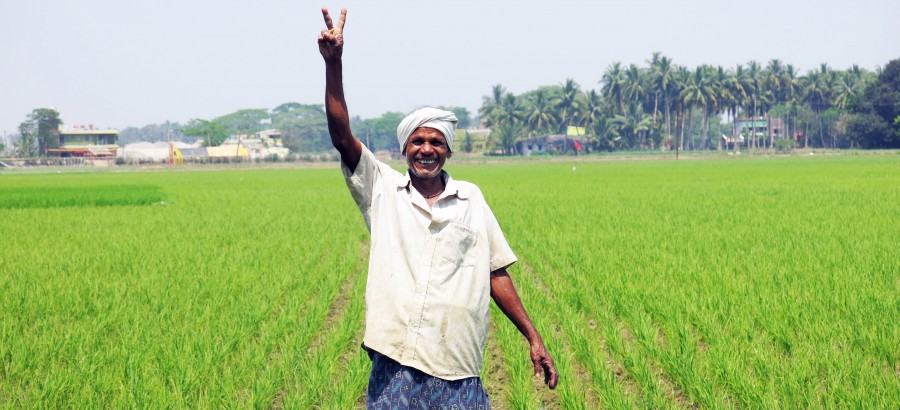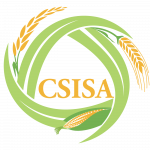Farmers Get Quick Wins from Laser Leveling

Farmer Anam Behera from Malikpali village in Odisha has been growing rice for the last 10 years. Increasing labor scarcity, however, has steadily driven up his costs of cultivation in recent years. The undulating topography of his land leads to uneven water distribution, resulting in a high density of grass and other weeds, which are costly and labor intensive to eradicate.
“To level my 4 acre field, I used to stand on a plank attached to a tractor as it went around the field. This wasn’t very effective in levelling my field, hence giving rise to excess grass. Ultimately, I had to hire 15 laborers for weeding, which cost me Rs. 3,000 (US$ 47),” says Behera.
This year, Behera used a laser land leveler to level his field, bringing down his labor requirement for weeding to just 2 laborers. Laser leveling is a laser-assisted precision leveling technique used for achieving a high level of land smoothness as compared to traditional methods of land leveling, which are both labor-intensive and imprecise. Laser leveling helps increase water application efficiency and consequently reduces costs and can increase crop yield. Numerous studies have proven that laser land leveling helps to even out the distribution of soluble salts in salt-affected soils, increases cultivable land area due to reduction in bunds and channels in the field, reduces weed intensity and increases fertilizer-use efficiency.
The Cereal Systems Initiative for South Asia (CSISA) is promoting laser leveling in Odisha by demonstrating its benefits to farmers and service providers. In Puri district, where Behera is based, CSISA loaned a laser land leveler to three service providers during the 2014-15 winter (rabi) cropping season. Behera hired one of these service providers to level his field at a cost of Rs. 500 (US$ 7) per hour for a total of 5 hours. This one-time investment will benefit Behera, who grows rice and moong, for the next three to four years.
Besides reducing labor and weeds, the leveler offers other benefits as well. As farmer Lakhinder Barik from neighboring Kulalasekhar Patatna village shares, “When my land wasn’t level, each irrigation took nearly 7 hours, not to mention the time and effort it took me to create small bunds all across the field.” After using the leveler, he saves more than 4 hours for each irrigation. Additionally, he no longer needs to create bunds, which saves him valuable time and effort and marginally increases his cultivable land.
By contrast, farmer Arjun Jena’s field is full of grass. Jena, whose field adjoins that of Barik, did not adopt laser land leveling this year. He admits, “I can see that the other (Barik’s) field is level while mine has pockets of deep water. My crop has too much grass due to this and I’ve already had to spend Rs. 2,000 (US$ 31) for weeding. Next time I’ll definitely use the laser land leveler.”
Encouraged by this response from farmers, the three service providers from Puri have purchased their own machines for the monsoon (kharif) cropping season.
This article is authored by Ashwamegh Banerjee, Assistant Communications Specialist, CSISA.
